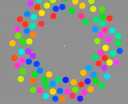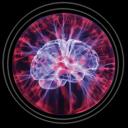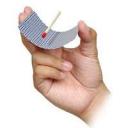May 14th, 2011
 Learning and teaching are clear cases of activities that very much depend on how our minds work. You would expected cognitive design efforts to reign supreme in education and training. Interestingly, applying the latest thinking in cognitive science and neuroscience to pedagogy and facilitating student and employee learning has not really gotten much traction. So I am always on the lookout for studies that demonstrate its value.
Learning and teaching are clear cases of activities that very much depend on how our minds work. You would expected cognitive design efforts to reign supreme in education and training. Interestingly, applying the latest thinking in cognitive science and neuroscience to pedagogy and facilitating student and employee learning has not really gotten much traction. So I am always on the lookout for studies that demonstrate its value.
Take for example, the recent study conducted at the University of British Columbia on the use of interactive teaching methods versus the traditional lecture model in undergraduate physics. They found students that experienced the interactive teaching methods scored twice as high on an exam that tests for understanding of complex physics concepts. In addition, the course using interactive methods had 20% better attendance.
“There is overwhelming evidence how much teaching pedagogy based on cognitive psychology and education research can improve science education,” says co-author Carl Wieman. “
Interactive methods are simple and well known. They include techniques
“… such as paired and small-group discussions and active learning tasks, which included the use of remote-control “clickers” to provide feedback for in-class questions. Pre-class reading assignments and quizzes were also given to ensure students were prepared to discuss course material upon arrival in class.”
Such techniques are far more congruent with how minds work when learning new material as compared to the sit-and-listen mode in lectures. Clearly this just scratches the surface of what we can do to optimize educational services for how minds really work.

Posted in Examples | 1 Comment »
May 11th, 2011
Cognitive designs emphasize features and functions that put us in a particular frame of mind. The goal is to use interaction to create specific perceptions, thoughts, feelings and action propensities in anyone that comes in contact with the design. In short, strong cognitive designs create a distinctive think-and-feel experience.
 One example of a distinctive think-and-feel is illusion or putting us in the frame of mind to believe something about the world that is not true. For some excellent examples check out the finalists in the 2011 Best Illusions of the Year Contest. I especially like Silencing Awareness by Background Motion (shown).
One example of a distinctive think-and-feel is illusion or putting us in the frame of mind to believe something about the world that is not true. For some excellent examples check out the finalists in the 2011 Best Illusions of the Year Contest. I especially like Silencing Awareness by Background Motion (shown).
Click on the image and go watch the video. Did the dots seem to stop changing color when the object rotated? If so, you experienced an illusion. Watch the video again only this time stare at a single dot. Watch closely as the object rotates and you will see that the dot continues to change color. Once you see it the illusion will fail to work.

Posted in Cognitive Bias, Examples | No Comments »
May 8th, 2011
 How much mental work can you do in one sitting? Are you motivated to tackle tough intellectual or emotional issues? Do you feel mentally invigorated or foggy? Each of these questions tests your level of mental energy. Mental energy is the fuel for self control, active reflection, conscious thinking and other executive cognitive functions. It is an important resource and one we need to manage carefully as we design workflows, consumer experiences, organizational change programs and other knowledge-intensive interactions.
How much mental work can you do in one sitting? Are you motivated to tackle tough intellectual or emotional issues? Do you feel mentally invigorated or foggy? Each of these questions tests your level of mental energy. Mental energy is the fuel for self control, active reflection, conscious thinking and other executive cognitive functions. It is an important resource and one we need to manage carefully as we design workflows, consumer experiences, organizational change programs and other knowledge-intensive interactions.
So I am always on the lookout for scientific studies that directly probe the nature of mental energy. Take for example the new research, Being of Two Minds: Switching Mindsets exhausts self-regulatory resources.
“Across five experiments we found support for the hypothesis that switching mindsets is an executive function that consumes self-regulatory resources and therefore renders people relatively unsuccessful in their self-regulatory endeavors. The current studies found converging effects across a wide range of mindset operationalizations”
A mindset like a mental model is a set of general purpose cognitive constructs and procedures we boot up often in response to situational queues that guide how we perceive, think, feel, decide and act.
Avoid switching mindsets to conserve mental energy.
Although a simple idea, it has powerful implications for the cognitive designer. As you design seek to minimize the number of mindset shifts that must occur during interaction. Designs that invoke a single low-load mindset avoid wasting mental energy.

Posted in Technique | No Comments »
May 5th, 2011
 Good cognitive designs pay particular attention (by dedicating features and functions) to psychological moments of truth (PMOT) in the customer experience. Casinos that use real time analytics to know when a high-value gambler is just getting ready to leave the table or a behavior change program that includes a “call your buddy” option when you are nearing relapse are two service designs focused on PMOT. These go far beyond the traditional PMOT of making a good first impression that many designs focus on. Product and service interactions are loaded with PMOT.
Good cognitive designs pay particular attention (by dedicating features and functions) to psychological moments of truth (PMOT) in the customer experience. Casinos that use real time analytics to know when a high-value gambler is just getting ready to leave the table or a behavior change program that includes a “call your buddy” option when you are nearing relapse are two service designs focused on PMOT. These go far beyond the traditional PMOT of making a good first impression that many designs focus on. Product and service interactions are loaded with PMOT.
Anytime you have a strong emotional reaction (e.g. we often hear I love my phone, I hate my insurance company and performance evaluations are a pain) you are experiencing a PMOT success or failure. Products or services that directly involve cognition – education, healthcare behavior change, decision support at work – are dominated by PMOT. These psychological moments of truth are not nice-to-haves or frosting on the service cake, they involve fundamentally important outcomes.
Take for example the need for watchful waiting in healthcare. Patients and clinicians can deal with symptoms that may be best resolved by careful watching versus prescriptions, expensive tests or trips to the emergence room. Yet patients are fearful and clinicians may feel the need to practice defensive medicine. When the emotional stress hits the decision making process we have a psychological moment of truth. Combine that with the cost of care being diffused by a third party and a fee for service model that links not waiting with making money and the PMOT becomes even more intense. We are not dealing with this very well. The result of not adequately supporting the cognition of watchful waiting is a major cost and quality driver in the US healthcare system.

Posted in Behavior Change, Examples, Service Innovation | 2 Comments »
May 4th, 2011
 McKinsey Quarterly recently published a summary of what neuroscience has to tell us about Sparking Creativity on Teams. While the findings won’t be news to readers of the Cognitive Design blog, having them summarized with references is useful. Key points include:
McKinsey Quarterly recently published a summary of what neuroscience has to tell us about Sparking Creativity on Teams. While the findings won’t be news to readers of the Cognitive Design blog, having them summarized with references is useful. Key points include:
* Drop verbal persuasion and argument as a way to change thinking and use immersion by designing events where team members directly observe or experience new ideas. For example, send the team on best practice visits (including plenty of flexible interaction time) to successful organizations in other industries.
* Use analogies and metaphors to force a comparison between seeming unrelated ideas or domains. For example, draw analogies between Amazon and your favorite lawn care service.
* Create artificial constraints to encourage reframing to generate insights. For example, what if we could only interact with our customers online?
Immersion, analogies and constraints when skillfully added into a problem solving process really do boost creativity because they take advantage of how our minds actually work.
Image Source: Success Rockets

Posted in Service Innovation | No Comments »
May 2nd, 2011
To do cognitive design we must first fathom how customers think and feel. Recent cognitive science has given us many insights into the how the mind works in terms of structures and processes but often has little or nothing to say about the actual content or what is on people’s minds. So I am also on the look out for empirical studies that pick out beliefs, desires, fears, hopes, moods or other mental states that make up the particulars of how a group of people think and feel.
 For example, take the recent study reported on EurekAlert! about the effectiveness of the three-wishes question used in the AMA’s guideline for adolescent preventative services. The idea is that a physician examining 11-18 year old patients asks “If you could have three wishes, what would they be?”. A study looking at the responses from 110 patients found:
For example, take the recent study reported on EurekAlert! about the effectiveness of the three-wishes question used in the AMA’s guideline for adolescent preventative services. The idea is that a physician examining 11-18 year old patients asks “If you could have three wishes, what would they be?”. A study looking at the responses from 110 patients found:
* 41% wished for wealth and 31% wished for a material item
* Girls tended to wish for happiness while boys wished for success
* Only 8% made wishes about personal appearance (a surprise)
Furthermore:
“Results showed that 85 percent of adolescents had wishes for themselves, 32 percent had wishes for others, and 10 percent had a wish for both themselves and others. Boys were more likely than girls to wish for things only for themselves (73 percent vs. 46 percent), while girls were more likely than boys to wish for something for their families (26 percent vs. 9 percent).”
As simple as it is, probing wishful thinking reveals psychological needs and cognitive differences at several levels.

Posted in Psychographics | No Comments »
April 28th, 2011
 Good magic and placebos clearly illustrate the power of cognitive design. Magic explicitly uses an understanding of how minds work to demonstrate to us in plain sight something we know is impossible. Placebos on the other hand accidentally play off of how minds work to demonstrate to clinicians something that should be biochemically impossible. In both cases our minds are fooled. Optical illusions and sugar pills that none the less create real effects not because of how the world works but because of how our minds work.
Good magic and placebos clearly illustrate the power of cognitive design. Magic explicitly uses an understanding of how minds work to demonstrate to us in plain sight something we know is impossible. Placebos on the other hand accidentally play off of how minds work to demonstrate to clinicians something that should be biochemically impossible. In both cases our minds are fooled. Optical illusions and sugar pills that none the less create real effects not because of how the world works but because of how our minds work.
That’s why I was especially intrigue by claims made by Canadian researchers that they created a machine that produces hand illusions that significantly reduce osteroarthritis pain. The machine captures a real-time video of your hand and uses some optics and simple sensors to trick you into believing your finger is being stretched or shrunk. I captured an image of their YouTube video below.

It feels and looks real and is enough to reduce joint pain by 50% in 85% of the members in one test group. There is other literature related to the use of optical illusions to relieve pain.
What else can we design optical placebos to do? How can the emerging technology of augmented reality (visual overlay of information on real objects) be used to create applications that leverage these cognitive effects?

Posted in Psychographics, Technique | 3 Comments »
April 24th, 2011
 I have bee reviewing the findings from the 2011 Temkin Customer Experience Ratings. You can access the entire report for free. Across 12 industries the average rating was on the cusp of poor. We have a long way to go when it comes to creating an excellent customer experience.
I have bee reviewing the findings from the 2011 Temkin Customer Experience Ratings. You can access the entire report for free. Across 12 industries the average rating was on the cusp of poor. We have a long way to go when it comes to creating an excellent customer experience.
Creating a customer experience is mostly a cognitive design challenge. It is driven by the think-and-feel your ads, product interactions and customer service process creates. It is as much about the psychology of customer-facing employees as it is understanding the mind of the consumer. Most businesses are run on a transactional basis and are not optimized to meet psychological needs. Indeed, very little cognitive psychology has worked its way into the management paradigm. So I am always on the lookout for studies that demonstrate the transactional importance of psychological factors.
For example, a recent study at Ohio State University, Got Up on the Wrong Side of the Bed, demonstrates that the mood you start your work day with can impact performance.
”Researchers found that employees’ moods when they clocked in tended to affect how they felt the rest of the day. Early mood was linked to their perceptions of customers and to how they reacted to customers’ moods.”
The impact on performance was measured by a change in both volume and quality of work. Cognitive factors were key. For example, high-positive mood produced greater verbal fluency (fewer pauses, stumbles and “ums”) which reduced call time and received a higher rating. The study was done with telephone customer service personnel.
The researchers suggest a little mood management might go a long way towards improving the customer experience. What does your organization do to lift the mood (or avoid souring it) at the start of each day?

Posted in Service Innovation | No Comments »
April 20th, 2011
 The Rotman School of Management and Mayo’s Center for Innovation recently sponsored a business design challenge for graduate students. The idea is to deeply integrate MBA style business acumen with the creativity of design thinking to produce breakthrough insights. The challenge was to:
The Rotman School of Management and Mayo’s Center for Innovation recently sponsored a business design challenge for graduate students. The idea is to deeply integrate MBA style business acumen with the creativity of design thinking to produce breakthrough insights. The challenge was to:
“Develop a new offering targeted at a specific patient population that will enable that population to improve their prospects for a healthy future.”
According to the post, The Rotman Design Challenge, the contest attracted some 19 teams from around the US and Canada. Five students from the Masters program in strategic foresight and innovation at the Ontario College of Art and Design won with the concept of Mayo Moms:
“Overlooking the intense emotions so often sparked by the topic of breastfeeding, the project envisioned Mayo as a facilitator, not a provider of healthcare per se. By certifying women who’d previously breastfed successfully as “Mayo Moms” and partnering them with mothers-to-be within the community, the students both leveraged Mayo’s brand and pointed to the creation of a potentially limitless social network.”
It will be interesting to see if this program is implemented. Getting individuals and groups more directly involved in wellness and prevention is something we clearly need to figure out – STAT.

Posted in Design, Events | No Comments »
April 18th, 2011
 Psychology Press, a leading publisher of books and articles on all aspects of cognition, has open up some of their content. Over 40 articles from 14 top journals are available online for free. The journals include for example, Memory, Cognitive Neuroscience and Aging Neuropsychology and Cognition. They plan on updating the content on a regular basis.
Psychology Press, a leading publisher of books and articles on all aspects of cognition, has open up some of their content. Over 40 articles from 14 top journals are available online for free. The journals include for example, Memory, Cognitive Neuroscience and Aging Neuropsychology and Cognition. They plan on updating the content on a regular basis.
Although the articles are theoretical in nature, many of them have implications for cognitive designers. For example:
How to Gain Eleven IQ Points in Ten Minutes, demonstrates that talking aloud while thinking improves the general intelligence of older adults but fails to have an impact on other cognitive tasks (e.g. visual memory) or boost cognition in younger adults.
Have You Got The Look? demonstrates a bias in visual cognition for faces that look directly at us rather than away. More specifically, a direct gaze (instead of averting your eyes) makes you more attractive to others.
The Influence of Affect on Higher Level Cognitive Functions reviews the literature on how emotion impacts interpretation, judgment, decision making and reasoning. They found a pronounced and complex impact, challenging the dual-mode or hot (emotion-based) versus cool (reason-based) model of cognition that is popular now. Instead they found a “dynamic interplay” of affect and cognition present in all higher cognitive functions. They over a specific model of this interplay that has clear design implications for applications in interpretation, decision-making and general reasoning.
If you read any of the articles please share your insights and any design implications you see.

Posted in Design | No Comments »
 Learning and teaching are clear cases of activities that very much depend on how our minds work. You would expected cognitive design efforts to reign supreme in education and training. Interestingly, applying the latest thinking in cognitive science and neuroscience to pedagogy and facilitating student and employee learning has not really gotten much traction. So I am always on the lookout for studies that demonstrate its value.
Learning and teaching are clear cases of activities that very much depend on how our minds work. You would expected cognitive design efforts to reign supreme in education and training. Interestingly, applying the latest thinking in cognitive science and neuroscience to pedagogy and facilitating student and employee learning has not really gotten much traction. So I am always on the lookout for studies that demonstrate its value.








